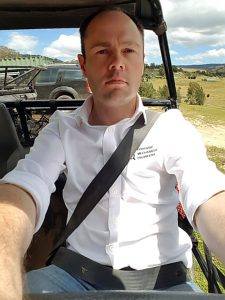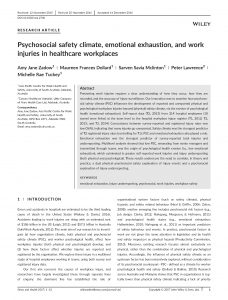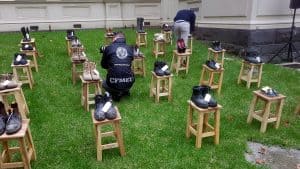I travelled to the 21st World Congress on Safety and Health in Singapore as a delegate and a media representative from my home in Australia. Was it worth attending? Yes and no. That may seem a weak answer but I attended in two capacities with two purposes – as an occupational health and safety (OHS) professional and an independent media representative. Both were satisfied a little bit and both could have been better. Here’s a personal report on my professional and media experiences at the World Congress.
Category: statistics
Tassie Coroner releases his safety findings on 7 quad bike deaths
Coincidentally, as an article about quad bike safety was being uploaded to this blog, details of the release of Tasmanian coronial findings were received. The findings were released by Coroner Simon Cooper on August 25 2017 and were not reported widely.
The Coroner investigated seven deaths related to quad bikes but only two occurred on workplaces or as part of performing work – Heather Richardson and Roger Larner. Curiously, WorkSafe Tasmania did not investigate these work-related deaths. Continue reading “Tassie Coroner releases his safety findings on 7 quad bike deaths”
OHS is PHS (public health and safety) but government needs to catch up
 The Australian Human Rights Commission has released a report into the prevalence of sexual harassment and sexual assault in Australia’s university campuses. It has revealed some shocking statistics and brings Australian universities into the global phenomenon of reassessing university obligations for the modern world.
The Australian Human Rights Commission has released a report into the prevalence of sexual harassment and sexual assault in Australia’s university campuses. It has revealed some shocking statistics and brings Australian universities into the global phenomenon of reassessing university obligations for the modern world.
Australia’s occupational health and safety laws and obligations could be used as a structure for preventing assaults and harassment if the government and universities would be brave enough to use them.
OHS and Tim White
 The latest in our series of profiles on researchers who are involved with occupational health and safety research is Dr Tim White. He holds the degrees of Bachelor of Engineering (Mechanical) and Doctor of Philosophy from the University of New South Wales (UNSW). His most recent appointment was as Lecturer and Researcher in Mechanical Design at UNSW.
The latest in our series of profiles on researchers who are involved with occupational health and safety research is Dr Tim White. He holds the degrees of Bachelor of Engineering (Mechanical) and Doctor of Philosophy from the University of New South Wales (UNSW). His most recent appointment was as Lecturer and Researcher in Mechanical Design at UNSW.
After 10 years of working casually as a consultant while also holding salaried positions, Dr White founded Forensic Mechanical Engineers in 2013 and now works full time as a forensic engineer and expert witness. He is based in Bathurst, NSW but travels extensively for work, often flying himself to regional locations.
What attracted you to looking at workplace health and safety? Did you fall into it or always have an interest?
I feel like I just fell into it, although now that I look back, I suppose that my career progression was reasonably intuitive. A farming background prior to my first engineering degree (and subsequent time in industry) meant that I was never going to be content doing the same thing as most of my peers. Although it was not a main consideration at the time, the PhD and progression into academia was what ultimately equipped me with the ability to now work flexibly in a role where I feel as though I am – clichés aside – doing something interesting as well as making a difference.
Research into “gross under-reporting” of illness and injuries
 There has been a lot of discussion recently about occupational health and safety (OHS) data. This article is another because the issue is critical for understanding OHS, for planning for the future and managing productivity.
There has been a lot of discussion recently about occupational health and safety (OHS) data. This article is another because the issue is critical for understanding OHS, for planning for the future and managing productivity.
On May 1 2017, the University of South Australia issued a media release about research by Amy Zadow. It opened with the following
“Accidents leading to work injuries cost an estimated $57 billion in Australia and new research from the University of South Australia shows workplaces are unlikely to be adequately addressing injury prevention because management decisions are informed by inaccurate data.”
Trade unions offer alternative, more accurate(?) workplace death statistics
 The Victorian Trades Hall Council (VTHC) indirectly acknowledged the ILO theme for World Day for Safety and Health at Work in its media release for International Workers Memorial Day 2017. The ILO was calling for more, and better, data on workplace injuries and illnesses. VTHC questioned the official workplace fatality numbers issued by the government. It stated:
The Victorian Trades Hall Council (VTHC) indirectly acknowledged the ILO theme for World Day for Safety and Health at Work in its media release for International Workers Memorial Day 2017. The ILO was calling for more, and better, data on workplace injuries and illnesses. VTHC questioned the official workplace fatality numbers issued by the government. It stated:
“A VTHC analysis shows that in 2016-17 over 200 Victorians died as a direct result of Workplace injury or illness, although the government’s official tally for the year is just 26.”
This disparity needs to be discussed across jurisdictions because occupational health and safety (OHS) data has always been incomplete, a fact acknowledged by many government inquiries in Australia for many years.
New program launched that forecasts safety and risk levels
 Almost every occupational health and safety (OHS) inquiry by the Australian Government has acknowledged the inadequacies of data on workplace injuries, illnesses and deaths. The 1995 Inquiry into Occupational Health and Safety (Volume 2) (pages 377-378) by the (then) Industry Commission acknowledged the lack of empirical evidence and made up its own. The situation has barely improved.
Almost every occupational health and safety (OHS) inquiry by the Australian Government has acknowledged the inadequacies of data on workplace injuries, illnesses and deaths. The 1995 Inquiry into Occupational Health and Safety (Volume 2) (pages 377-378) by the (then) Industry Commission acknowledged the lack of empirical evidence and made up its own. The situation has barely improved.
However a new project by West Australian academic,
